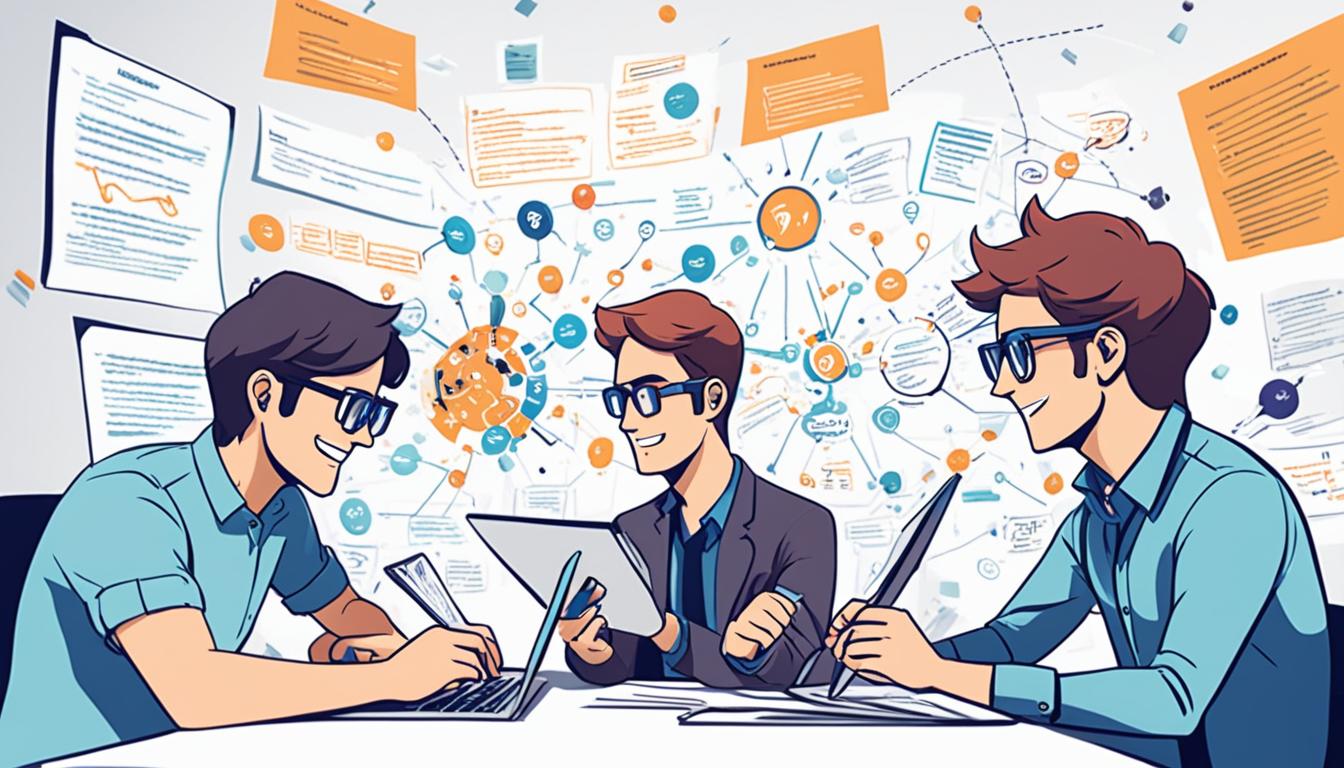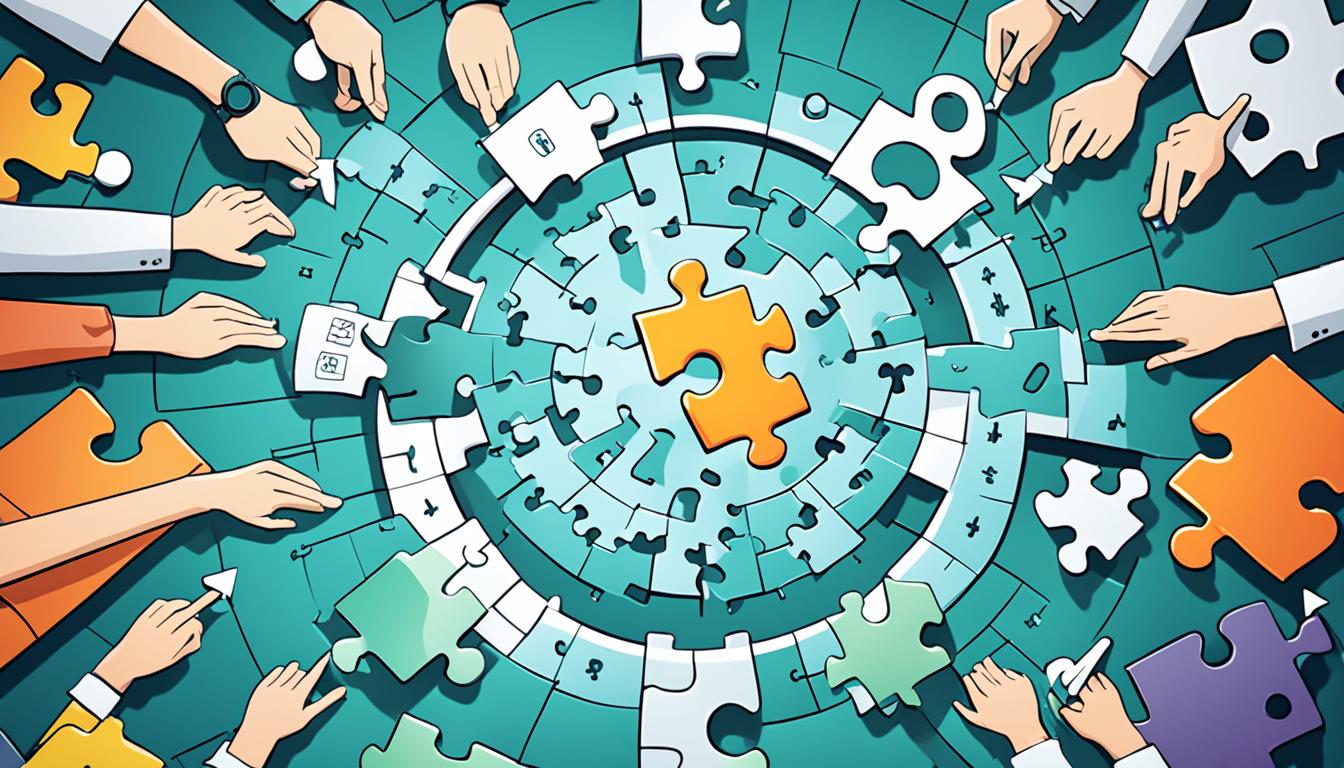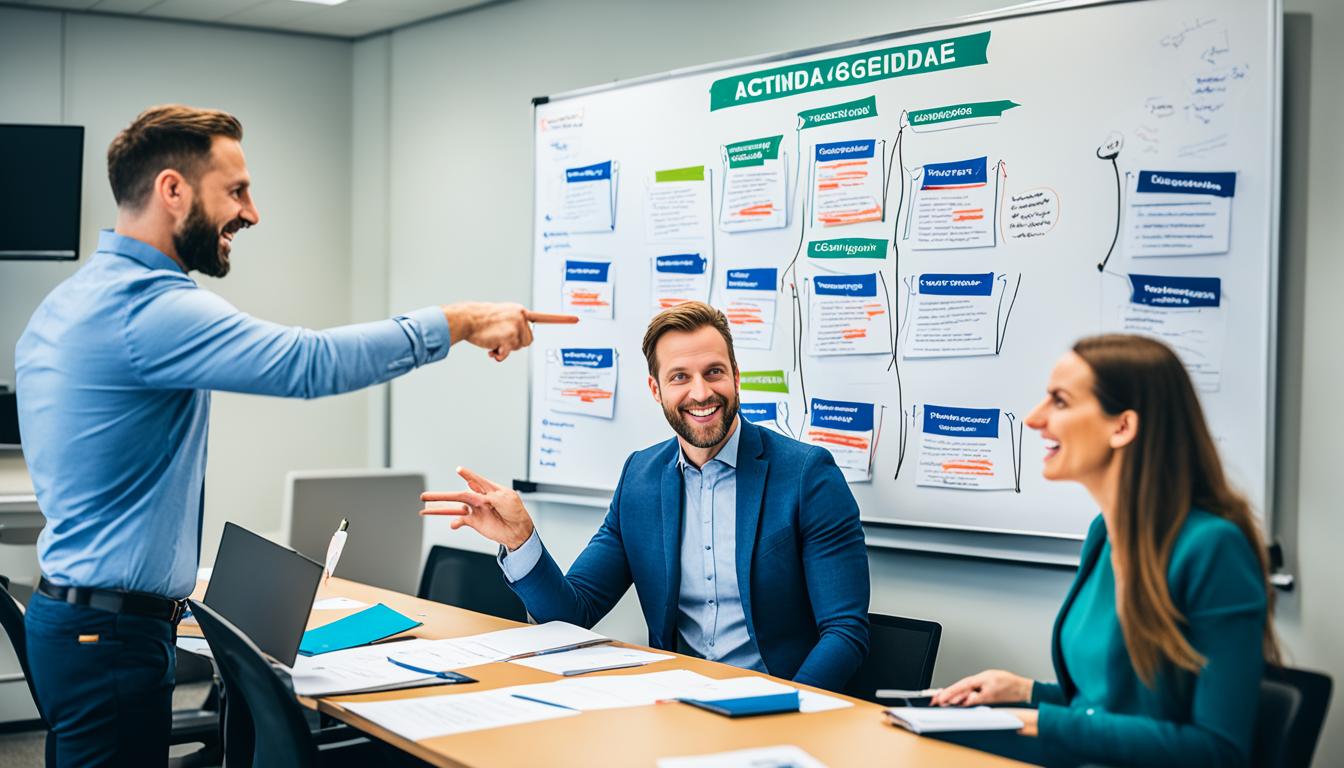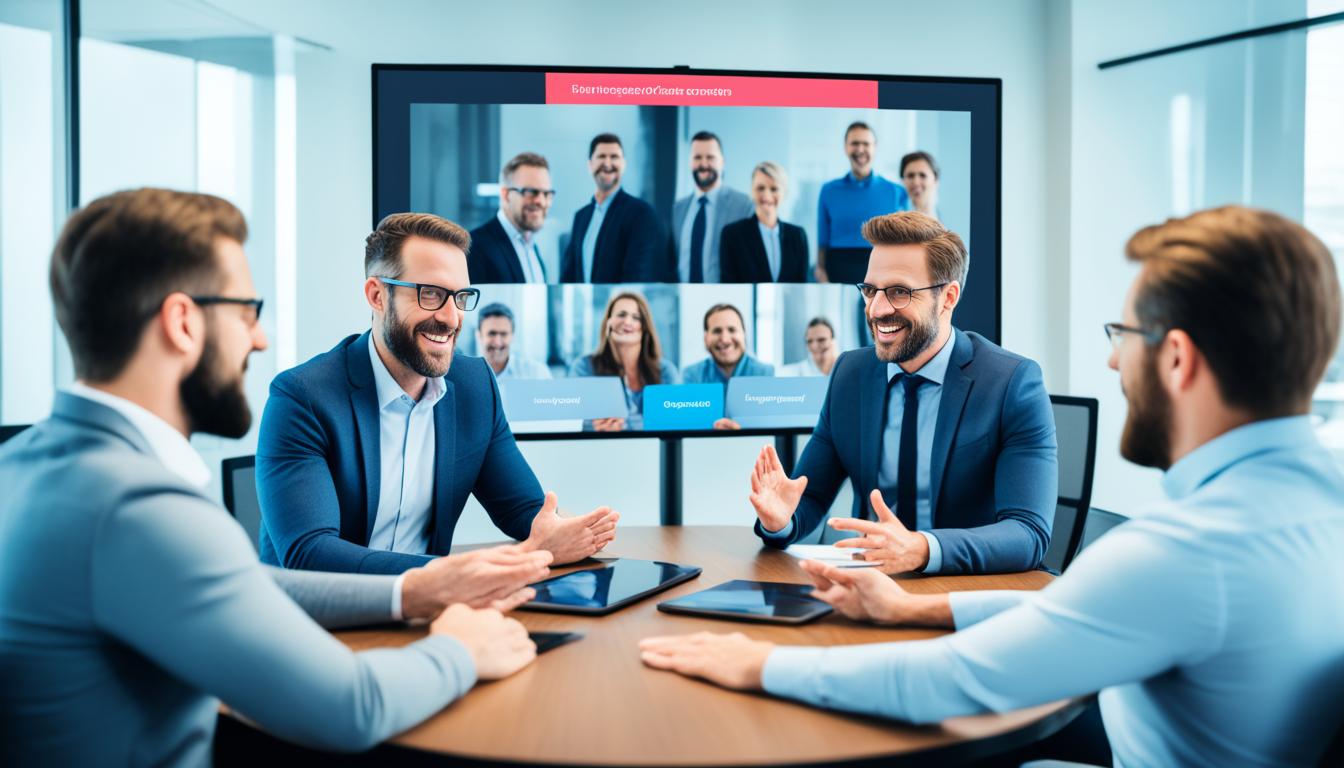
“Meeting Minutes Mastery: Techniques for Effective Record-Keeping””

“The art of communication is the language of leadership.” – James Humes
Effective communication and accurate record-keeping are crucial in professional settings. Whether you are a manager, team leader, or project coordinator, mastering the art of meeting minutes is essential for efficient collaboration and successful outcomes. The ability to capture essential information, summarize discussions, and produce well-structured meeting minutes is a valuable skill that can elevate your professionalism and ensure the smooth functioning of your team or organization.
In this article, we will explore various meeting minutes techniques and best practices that will help you become a master of meeting documentation and effective record-keeping. From understanding the importance of meeting minutes to tips for taking minutes in board meetings, we will provide you with the knowledge and tools to excel in this critical aspect of your work.
Key Takeaways:
- Effective communication and record-keeping are crucial in professional settings.
- Mastering meeting minutes is essential for efficient collaboration and successful outcomes.
- Meeting minutes serve as official records, providing documentation, accountability, and transparency.
- Various minute taking techniques and tips can enhance your ability to capture essential information and summarize discussions.
- Taking minutes in board meetings is essential for transparency, accountability, compliance, and efficient decision-making.
Understanding the Importance of Meeting Minutes
Meeting minutes play a crucial role in promoting effective communication and organizational efficiency. They serve as comprehensive documentation, offering a wealth of information that can be referenced at any time. Whether it’s recalling specific details, understanding the course of discussions, or reviewing decisions made, meeting minutes serve as a valuable resource for documentation and reference.
In addition to their documentation and reference benefits, meeting minutes also fulfill legal and compliance requirements. They serve as tangible evidence in legal disputes, providing a clear record of discussions and decisions, and ensuring that the meeting was conducted in accordance with legal standards.
“Meeting minutes establish accountability and transparency within an organization. By clearly recording discussions, decisions, and actions taken, they hold individuals responsible for their contributions and provide a level of transparency that fosters trust and collaboration.”
Furthermore, meeting minutes contribute to effective decision-making. By capturing key points and actions, they enable participants to review past discussions and decisions, facilitating informed and strategic decision-making for future endeavors. This not only saves time but also ensures that decisions align with organizational goals and objectives.
Meeting minutes also serve as historical documentation, chronicling the growth and progress of an organization. They provide a historical record of important decisions, milestones, and achievements, enabling stakeholders to understand the context and evolution of an organization over time.
Lastly, meeting minutes promote communication and collaboration among meeting participants. They serve as a platform for sharing ideas, disseminating information, documenting agreements, and assigning responsibilities. By ensuring that everyone has access to the same information, meeting minutes eliminate ambiguity and enable effective communication and collaboration.
| Benefits of Meeting Minutes | Keywords |
|---|---|
| Documentation and Reference | Meeting documentation, Reference |
| Legal and Compliance Requirements | Legal, Compliance Requirements |
| Accountability and Transparency | Accountability, Transparency |
| Effective Decision-making | Effective Decision-making |
| Historical Documentation | Historical Documentation |
| Communication and Collaboration | Communication, Collaboration |
Various Minute Taking Techniques
When it comes to minute taking, employing effective techniques is crucial to ensuring accurate and organized documentation. By utilizing the following minute taking techniques, you can improve the quality of your meeting minutes, enhance communication, and facilitate smooth decision-making processes.
1. Prepare for the Meeting
Before the meeting commences, take the time to familiarize yourself with the agenda and any relevant background materials. This will enable you to anticipate the discussion topics and formulate a structured plan for taking notes.
2. Active Listening
During the meeting, practice active listening by attentively focusing on what is being said. Avoid distractions and be fully present, capturing key points, decisions, and actions with precision.
3. Effective Notetaking
Develop a shorthand or abbreviations system to streamline your notetaking process. This will allow you to keep up with the fast-paced nature of meetings while capturing essential information accurately and efficiently.
4. Structure and Organization
Create a structured and organized format for your meeting minutes. Use headings, subheadings, and bullet points to clearly outline the discussion points, decisions, and action items discussed during the meeting.
5. Selective Summarization
Avoid the temptation to transcribe every word uttered during the meeting. Instead, focus on capturing the key ideas and discussions succinctly. Summarize the information in a way that is easy to understand and digest.
6. Use Clear Language
Write your meeting minutes using clear and concise language. Avoid jargon, acronyms, or technical terms that may confuse readers. Ensure your minutes can be easily understood by anyone who reads them, even those who were not present at the meeting.
7. Active Participation
Active participation in the meeting allows you to fully grasp the context and nuances of discussions. By participating actively, you can ask clarifying questions, seek input when needed, and contribute valuable insights to the meeting.
8. Post-meeting Verification
After the meeting, take the time to verify the accuracy of your meeting minutes. Cross-reference your notes with any recordings or additional resources to ensure that all information is complete and correct.
By following these minute taking techniques, you can enhance your ability to capture essential information, facilitate efficient communication, and produce well-structured meeting minutes.
Tips for Effective Minute Taking
To enhance your minute taking skills, there are several tips you can follow to ensure accurate and comprehensive meeting minutes. By implementing these techniques, you can create well-structured and informative records that capture the essence of the discussions. Stick to the facts, avoid biased language, represent all perspectives, record dissenting opinions, and be mindful of tone. Additionally, double-check the accuracy of your minutes and handle confidential or sensitive information with care.
“Stick to the facts, avoid biased language, represent all perspectives, record dissenting opinions, be mindful of tone, double-check accuracy, and handle confidential or sensitive information with care.”
When taking minutes, it is important to focus on providing an objective account of the meeting. Stick to presenting the facts and avoid injecting personal opinions or biases into your minutes. This ensures that the records remain unbiased and trustworthy.
Including various perspectives in your minutes is essential for capturing a well-rounded view of the discussions. Make an effort to represent all participants’ viewpoints and give equal weight to their contributions.
Record dissenting opinions or any disagreements that arise during the meeting. This showcases the different perspectives and helps provide a comprehensive record of the discussions.
Mindful tone is crucial when drafting meeting minutes. Use professional and respectful language, maintaining a neutral tone throughout the document. This creates a sense of professionalism and fosters a positive environment.
Accuracy is paramount when it comes to meeting minutes. Double-check all the information you have recorded, including names, dates, and key points. This diligence ensures that the records are reliable and error-free.
Confidential or sensitive information discussed during the meeting must be handled with care. Safeguarding this information maintains the trust and confidentiality of the participants.
Remember, effective minute taking serves as a valuable resource for reference, decision-making, and historical documentation. By employing these tips, you can master the art of minute taking and contribute to more productive and efficient meetings.
Board Meeting Minutes: Definition and Elements
Board meeting minutes serve as formal written records of discussions and decisions made during an organization’s board of directors meeting. These minutes are essential for maintaining a comprehensive overview of the meeting proceedings and ensuring transparency and accountability within the board.
When documenting board meeting minutes, it is crucial to include the following key elements:
- Meeting Details: Begin the minutes by stating the date, time, and location of the board meeting. This information helps provide context and establishes a record of when the meeting took place.
- Attendees: List the names of all individuals present at the meeting. This includes board members, executives, guests, and any other relevant stakeholders. Recording attendance ensures that everyone’s contributions are acknowledged.
- Call to Order: Note when the meeting was officially called to order, indicating the start of the proceedings.
- Approval of Previous Meeting Minutes: Document whether the previous meeting minutes were reviewed and approved by the board. This step ensures continuity and accuracy in the records.
- Agenda: Provide an overview of the meeting agenda, including key topics or items to be discussed. This helps structure the minutes and provides a clear outline of the meeting’s focus.
- Discussion: Summarize the main points of the discussions that took place during the meeting. Highlight any significant viewpoints, arguments, or decisions made by the board.
- Reports: Outline any reports or presentations delivered during the meeting. Include pertinent details, such as the presenter’s name and a brief summary of the information shared.
- Voting Record: Clearly document all votes taken during the meeting, including the outcome of each vote. This ensures transparency and provides a clear record of the board’s decisions.
- Action Items: Record any action items assigned during the meeting. Include details such as who is responsible for each task and the expected timeline for completion.
- Adjournment: Note the time and manner in which the meeting was adjourned, formally concluding the proceedings.
By including these essential elements in board meeting minutes, organizations can maintain accurate and comprehensive records of their board discussions and decisions. These minutes serve as a valuable resource for future reference, legal compliance, and effective governance.
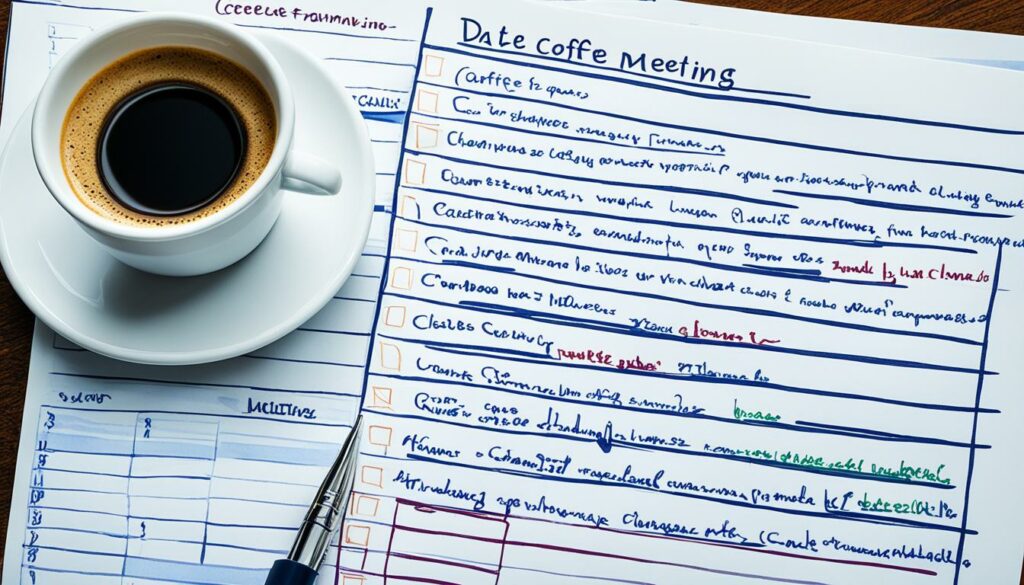
Why Should You Take Minutes for Board Meetings?
Taking minutes for board meetings is of utmost importance for various reasons. It ensures transparency, accountability, legal compliance, and efficient decision-making within an organization. Let’s explore the significance of taking minutes in more detail.
- Transparency: Meeting minutes provide a comprehensive record of discussions and decisions made during board meetings, allowing stakeholders to have a clear understanding of the proceedings. This transparency fosters trust and ensures that all participants are on the same page.
- Accountability: By documenting the discussions and decisions accurately, meeting minutes hold board members accountable for their actions. The minutes serve as a reference point, allowing for the tracking of responsibilities assigned and follow-up actions required.
- Legal Compliance: Taking minutes for board meetings is a legal requirement in many jurisdictions. These official and well-documented records can serve as evidence in legal disputes, ensuring the organization’s compliance with legal obligations.
- Efficient Decision-Making: Meeting minutes facilitate efficient decision-making by providing a historical record of discussions and decisions. Board members can refer to past minutes for context and make informed decisions based on previous discussions and outcomes.
It is crucial to recognize the importance of taking minutes for board meetings. These minutes not only capture the essence of the meeting but also play a vital role in ensuring transparency, accountability, legal compliance, and efficient decision-making within the organization.
“Good minutes are clear, concise, and a legal and historical record of board actions. They are not a transcript of what was said but rather the reporting of board actions and decisions for approval and future reference.” – Institute of Directors
| Benefits of Taking Minutes for Board Meetings | |
|---|---|
| Transparency | Ensures clear understanding and trust |
| Accountability | Holds board members responsible for actions |
| Legal Compliance | Serves as evidence in legal disputes |
| Efficient Decision-Making | Provides historical context for informed decisions |
By embracing the practice of taking minutes for board meetings, organizations can uphold transparency, accountability, legal compliance, and effective decision-making processes, ultimately contributing to their overall success and governance.
How to Take Minutes for Board Meetings?
When taking minutes for board meetings, it is important to focus on key elements, use a meeting note taking template, make notes accessible to team members and clients, transform notes into engaging resources, and identify high-importance areas that require follow-up actions.
Focus on Key Elements
During board meetings, pay attention to the key elements that need to be captured in the minutes. These may include meeting details, attendees, agenda items, discussion points, action items, and decisions made. By focusing on these essential elements, your minutes will effectively summarize the meeting proceedings and serve as a valuable reference.
Use a Meeting Note Taking Template
Utilizing a meeting note taking template can streamline your minute-taking process. Templates provide a consistent structure and format, ensuring that all necessary information is captured. They also help organize your notes and make them easier to review and reference later on.
Make Notes Accessible
After the meeting, make sure to share the minutes with all relevant stakeholders. This includes both team members and clients who may need access to the information discussed during the board meeting. By making the notes accessible, you promote transparency and collaboration, allowing everyone to stay informed and aligned.
Turn Notes into Engaging Resources
Instead of simply presenting minutes as boring text, consider transforming them into engaging resources. You can incorporate visual elements, graphs, or charts to present key data points. Additionally, you can include relevant quotes from meeting participants to highlight important discussions. By making the minutes visually appealing and engaging, you enhance their effectiveness and impact.
Identify High-importance Areas for Follow-ups
While taking minutes, pay attention to areas that require follow-up actions or further discussion. Flagging these high-importance areas within the minutes ensures that important matters are not overlooked. It also facilitates efficient decision-making and keeps the board accountable for addressing key issues.
Taking minutes for board meetings is a critical responsibility that requires attention to detail and a focus on key elements. By using templates, making notes accessible, and transforming them into engaging resources, you can enhance the effectiveness of your minutes. Additionally, identifying high-importance areas for follow-ups ensures that action is taken on important matters. With these best practices, you can take effective minutes for board meetings that contribute to the success and productivity of your organization.
The Power of Technology in Meeting Notes
When it comes to taking meeting notes, technology can be a game-changer. By utilizing the right tools and techniques, you can enhance your note-taking process, improve collaboration, and transform your notes into valuable resources.
Meeting Note Taking Tools
One of the most significant advancements in note-taking technology is the availability of AI-powered tools. These tools can transcribe audio recordings, extract key points, and even provide real-time summaries. By leveraging these tools, you can save time and ensure accuracy in capturing meeting discussions and decisions.
Handwritten Notes for Improved Focus and Accuracy
Despite the prevalence of digital note-taking, handwritten notes still have their advantages. Research suggests that writing notes by hand helps improve focus, comprehension, and retention. Consider using a tablet or a smartpen that digitizes your handwritten notes for the best of both worlds – the accuracy of digital notes and the benefits of handwriting.
Recording Only Key Meeting Items
When taking meeting notes, it’s essential to focus on capturing the key items discussed. Avoid trying to transcribe every word and instead concentrate on summarizing the main points, decisions, and action items. This ensures that your notes are concise, easy to review, and provide a clear overview of the meeting discussions.
Use a Meeting Note Taking Template
To maintain consistency and structure in your meeting notes, using a template can be highly beneficial. A template provides a predefined format that helps you capture essential details such as meeting objectives, attendees, agenda items, and action items. It streamlines the note-taking process and ensures comprehensive documentation.
Make Notes Accessible
Sharing your meeting notes with team members and stakeholders is crucial for effective collaboration. Utilize cloud storage solutions or collaboration platforms to make your notes easily accessible to everyone involved. This enables seamless communication, promotes transparency, and allows for simultaneous referencing and editing.
Turn Notes into Engaging Resources
“Meeting notes shouldn’t just be a record of what was said; they can be transformed into valuable resources.”
Take your meeting notes to the next level by leveraging technology to turn them into engaging resources. Consider creating visual summaries, infographics, or actionable checklists based on your notes. This not only enhances the understanding and retention of the meeting outcomes but also facilitates the implementation of action items.
Identify High-importance Areas for Follow-ups
During a meeting, certain discussions or decisions may require immediate follow-up. By using technology tools to analyze your notes, you can identify high-importance areas that need further attention. This ensures that critical action items and unresolved issues are promptly addressed, minimizing the risk of missed opportunities or incomplete tasks.
Overall, embracing technology can significantly enhance your meeting note-taking process. By leveraging the power of AI tools, combining digital and handwritten notes, using templates, making notes accessible, and transforming them into engaging resources, you can streamline your workflow, improve collaboration, and maximize the value of your meeting minutes.
Conclusion
Meeting minutes play a vital role in accurate documentation, accountability, compliance, and efficient decision-making. By applying the recommended techniques and tips, you can become adept at taking effective meeting minutes and enhance communication, productivity, and organizational effectiveness.
Effective record-keeping begins with thorough preparation before the meeting. Actively listening and taking notes in an organized manner ensure accurate and comprehensive documentation. Remember to use clear and concise language, representing all perspectives and recording dissenting opinions to maintain transparency and inclusivity.
After the meeting, double-checking the accuracy of your minutes is crucial. Pay attention to tone, avoiding biased language and ensuring confidentiality when handling sensitive information. By implementing these effective record-keeping techniques, you can produce reliable meeting minutes that serve as valuable resources for future reference and decision-making.
















